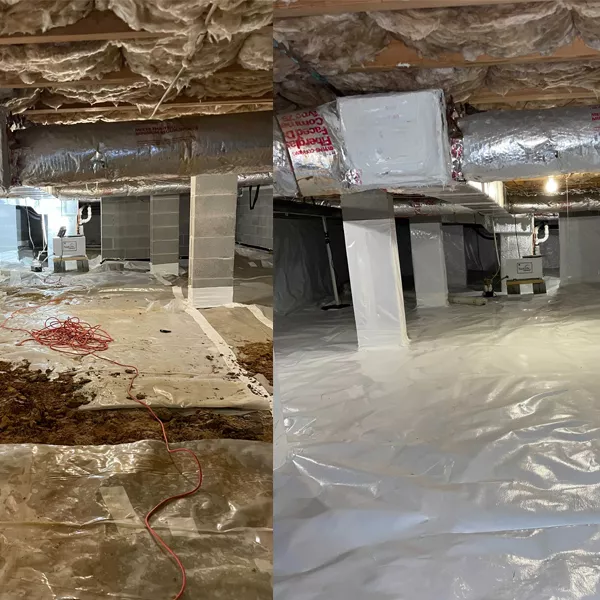Dreading that tile removal project? Our comprehensive guide reveals professional techniques to safely remove tiles while protecting your walls – saving you time, money, and stress.
Understanding Your Tile Installation
Before diving into tile removal, it’s crucial to understand what you’re dealing with. Different types of tiles and installation methods require specific approaches. Ceramic and porcelain tiles are typically attached with either mastic adhesive (common in older installations) or modern thinset mortar. Wall tiles installed before 1980 may contain asbestos in either the adhesive or backing, requiring professional assessment before removal. Modern installations generally feature cement-based adhesives and are relatively straightforward to remove, though proper technique is essential to prevent wall damage.
Essential Safety Precautions and Equipment
- Safety goggles and a HEPA-rated dust mask or respirator
- Heavy-duty work gloves
- Long-sleeved clothing and sturdy shoes
- Knee pads for floor tile removal
- Dust sheets and plastic sheeting for containment
- HEPA vacuum cleaner
Required Tools
- Manual tile removal set (chisel and hammer)
- Electric chipping hammer or oscillating multitool
- Pry bars in various sizes
- Utility knife for scoring grout
- Heavy-duty rubbish bags
Preparation: Setting Up Your Workspace
Proper preparation is vital for successful tile removal. Start by removing all furniture and fixtures from the work area. Cover any remaining items with thick plastic sheeting. Create a dust containment system by sealing off doorways and vents with plastic sheeting and tape. Set up a HEPA air purifier to filter airborne particles. For bathroom projects, protect fixtures with cardboard and tape. Ensure adequate ventilation while maintaining dust containment. Recent studies show that proper dust control can reduce cleanup time by up to 60%.
Step-by-Step Tile Removal Process
Begin at a tile edge or corner where you can gain leverage. Score the grout lines around your starting tile using a utility knife or oscillating tool. Apply the chisel at a 45-degree angle between tiles and tap gently with a hammer. Once the first tile is removed, work systematically across the surface, maintaining consistent pressure to avoid damaging the substrate. Professional tip: Work in small sections of about 1 square metre at a time, keeping the work area manageable and controlled.
Managing Stubborn Tiles and Adhesive
- Heat gun application can soften stubborn adhesive
- Use a wider chisel for particularly resistant areas
- Apply penetrating oil to tough spots and allow to soak
- Consider using an electric chipping hammer for extensive areas
- Work slowly and methodically to prevent wall damage
Wall Repair and Surface Preparation
After tile removal, you’ll likely need to address wall damage. Statistics show that 80% of DIY tile removal projects require some level of wall repair. Use a putty knife to scrape away remaining adhesive. For deeper damage, apply patching compound in thin layers, allowing each to dry completely. Sand the surface smooth once repairs are complete. Prime the area before any new installation. Professional tip: Use a level to check for high spots that might affect new tile installation.
Professional Tips and Troubleshooting
- Start in an inconspicuous area to perfect your technique
- Keep tools sharp for cleaner removal
- Spray water lightly on particularly dusty areas
- Work from top to bottom for wall tiles
- Take regular breaks to prevent fatigue
Clean-Up and Disposal
Proper cleanup is crucial for both safety and preparation for new floor installations. Use a HEPA vacuum for initial debris removal, followed by damp wiping all surfaces. Dispose of tiles and adhesive according to local regulations – many areas require special handling for construction waste. Recent environmental guidelines recommend recycling ceramic tiles where possible, with some facilities now accepting clean tile for crushing and reuse in construction aggregates.
When to Call a Professional
While DIY tile removal is possible, certain situations warrant professional intervention. Consider expert help if: dealing with pre-1980s installations, encountering extensive wall damage, working with natural stone tiles, or managing large commercial spaces. Professional services typically cost £15-30 per square metre but can save significant time and prevent costly mistakes.
Final Thoughts and Next Steps
Successful tile removal requires patience, proper preparation, and the right techniques. Take time to assess your project thoroughly before beginning, and don’t hesitate to seek professional help if needed. Remember that proper safety precautions and dust control are non-negotiable aspects of any tile removal project. With careful planning and execution, you can achieve professional-quality results while protecting your walls and preparing for your next renovation phase.
FAQ
Is removing tiles difficult?
Removing floor tile can be a difficult and time-consuming project and the challenges often remain hidden until the project is underway. Depending on the construction, the tile may be attached to bare cement, a plywood or mason board underlayment or even affixed to a previously installed floor.
What is a tile ripper?
Time Rippers are machines used by the Time Variance Authority to “mercy kill” entire realities. They work by combining matter and anti-matter to trigger total molecular breakdown.
What is the best tool to remove tile cement?
An angle grinder is one of the best thinset and tile removal tools around. If you happen to have an angle grinder on hand you have used before for concrete grinding, try pairing it up with the stiffest metal brush attachment you can find.
What is the tool called to remove tile?
Masonry Chisel Sometimes you can also use a chisel together with a hammer. The masonry chisel not only do an excellent tile lifting job but is also on budget. You can comfortably remove the entire floor using a hammer and a chisel though the job may take longer.
How to soften grout for removal?
Apply warm water and lemon juice to the grout and allow it to soak in. It should help to soften the area a little to make removal easier.
Sources
[1] https://www.youtube.com/watch?v=XfmQ3G88NTc
[2] https://www.dustram.com/tile-removal-tool/
[3] https://thediyplaybook.com/tips-to-remove-floor-tile/



